Aluminum foil is a kitchen staple—perfect for grilling, baking, or wrapping up leftovers. But while it’s incredibly convenient, not all foods play nice with foil. In fact, wrapping certain ingredients can trigger chemical reactions that affect taste, texture, and even your health. Before your next cookout or oven bake, it’s worth knowing which foods should never come into contact with foil—and which ones actually taste better because of it. From acidic dishes that can leach metal to moist, savory meals that turn out perfectly sealed, here are 7 foods to avoid—and 5 delicious reasons to keep foil on hand.
1. Tomatoes and Tomato-Based Sauces
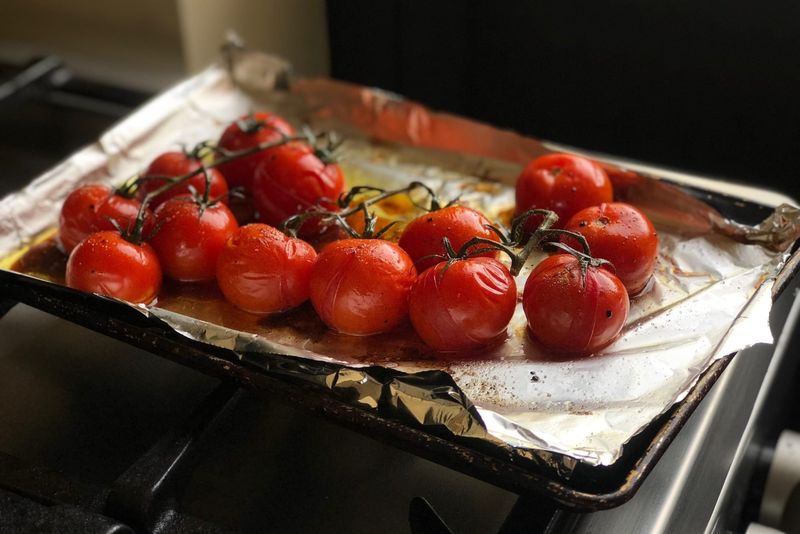
Tomatoes pack a powerful acidic punch that can spell trouble when combined with aluminum foil. The acid in tomatoes triggers a chemical reaction, causing the metal to dissolve and leach into your food. Nobody wants a side of aluminum with their pasta sauce!
This reaction not only creates an unpleasant metallic taste but may also pose potential health concerns over time. The effect is even stronger with heated tomato products like sauces and soups. Instead of foil, store tomato-based foods in glass containers or use parchment paper for cooking. Your taste buds and body will thank you for keeping these acidic red gems away from their silver enemy.
2. Citrus Fruits

Lemons, oranges, and limes might brighten your day, but they’ll darken your experience with aluminum foil. These tangy fruits contain high levels of citric acid that quickly corrode foil’s surface. Ever noticed a pitted, discolored appearance when citrus touches foil? That’s the chemical reaction happening before your eyes.
When this reaction occurs, aluminum salts transfer directly into your food. The result? A strange metallic flavor that ruins the bright, fresh taste you were expecting. For storing cut citrus, reach for airtight glass containers or specialized produce bags instead. If you’re cooking, parchment paper makes an excellent alternative when you need to wrap these zesty fruits.
3. Vinegar-Based Foods
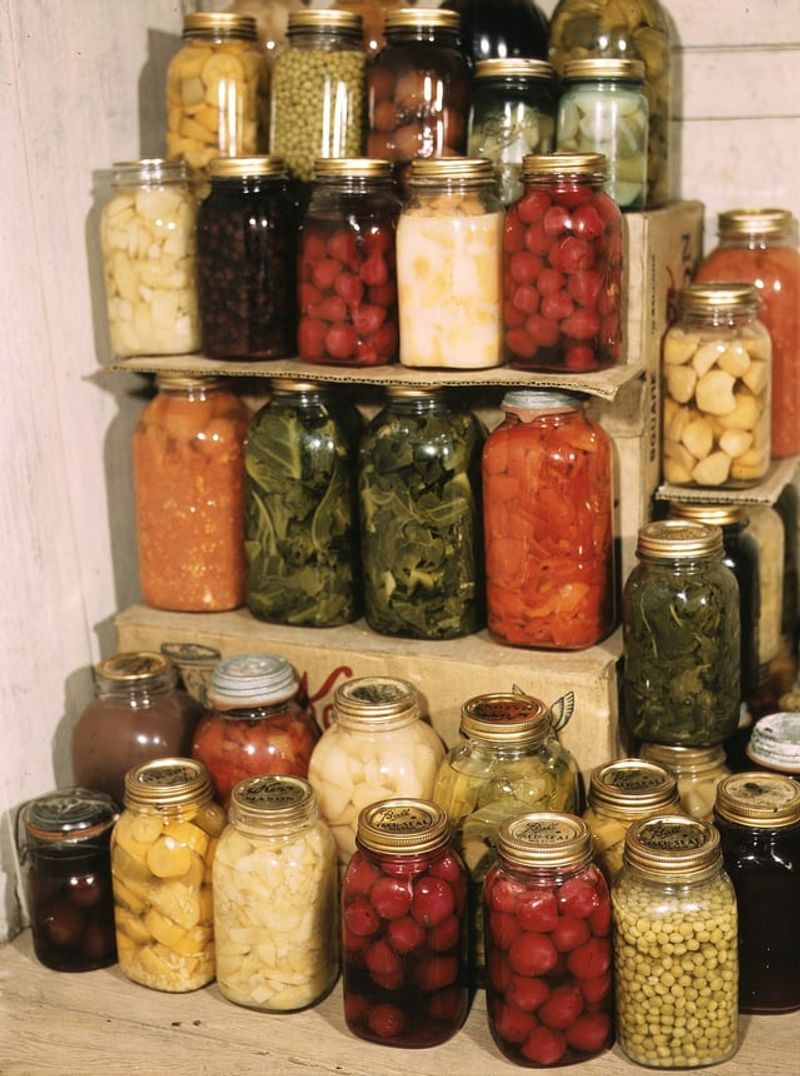
Pickles, sauerkraut, and other vinegar-preserved foods are kitchen favorites with serious foil-fighting abilities. The acetic acid in vinegar aggressively attacks aluminum, creating aluminum acetate – a compound you definitely don’t want seasoning your food. This chemical reaction happens surprisingly quickly. Even brief contact can alter the taste of your carefully crafted pickles or tangy sauerkraut, adding an off-putting metallic flavor that’s impossible to ignore. Glass containers with tight-fitting lids are the gold standard for storing these foods. For cooking vinegar-based dishes, stick with ceramic, glass, or stainless steel cookware to preserve those complex flavors you worked so hard to create.
4. Salty Dishes
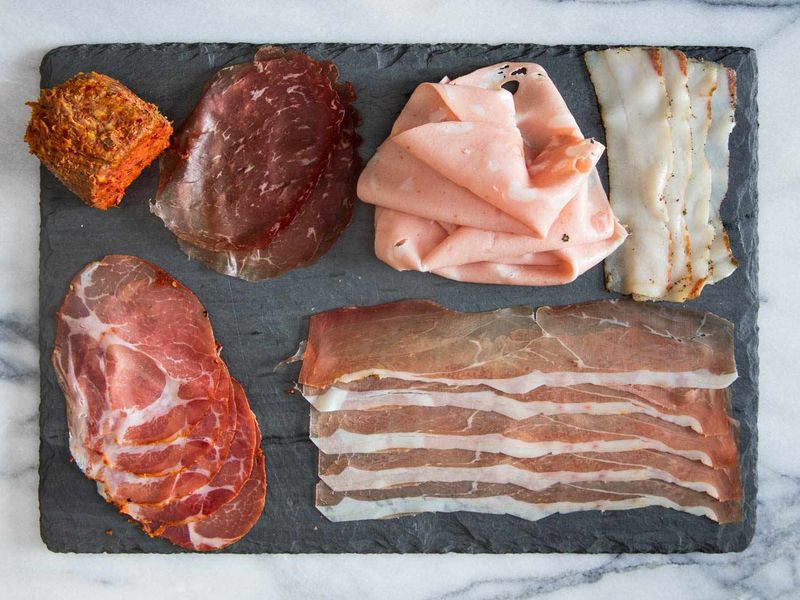
Ham, bacon, cured meats, and other salt-heavy foods might seem harmless, but they’re secretly foil’s nemesis. Salt creates an electrochemical reaction when it contacts aluminum, especially in the presence of moisture. This scientific phenomenon accelerates the breakdown of foil at an alarming rate. As the foil deteriorates, tiny aluminum particles migrate directly into your food.
Besides the potential health concerns, this contamination can drastically change the flavor profile of your carefully prepared dish. For storing salty foods, butcher paper, parchment, or food-grade plastic containers offer better alternatives. When cooking salt-cured meats, consider cast iron, ceramic, or glass bakeware instead of creating foil packets.
5. Spicy Foods
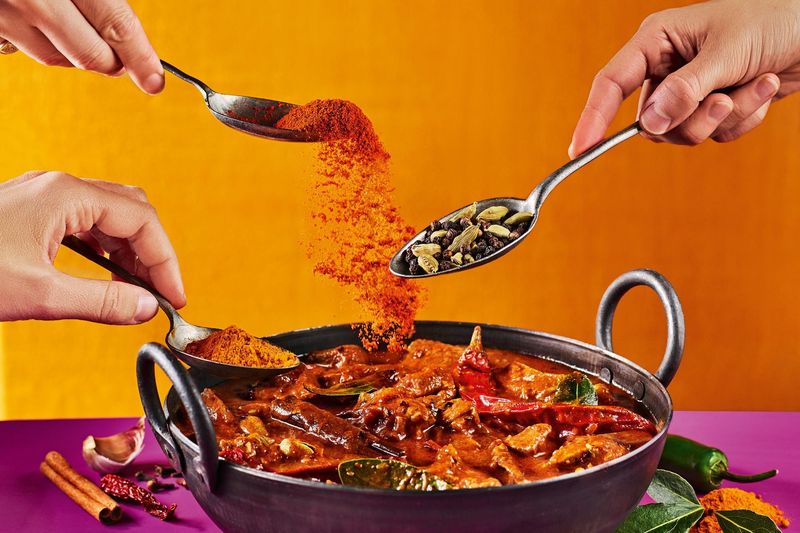
Your favorite curry or chili might pack a flavor punch, but wrap it in foil and you’re in for an unwelcome surprise. Spices – especially those with high alkaline content – can trigger reactions with aluminum that alter your food’s carefully balanced flavors. The problem intensifies with heat and time. That spicy leftover wrapped in foil overnight? It’s been slowly developing metallic undertones while you sleep, as spices work their chemical magic on the aluminum surface. Glass containers with airtight lids make perfect homes for spicy leftovers. When cooking these flavor-packed dishes, choose ceramic, cast iron, or stainless steel cookware to maintain their authentic taste profiles without unwanted metallic notes.
6. Rhubarb and Berries
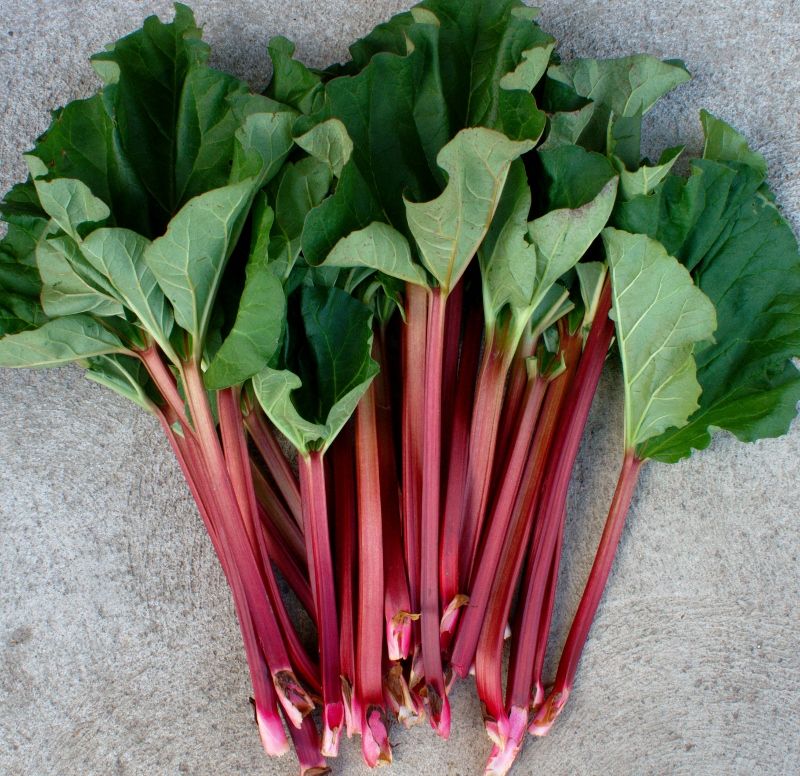
The vibrant tartness of rhubarb and berries comes from their natural acids – the same compounds that make them foil’s fierce adversaries. When these fruits contact aluminum, they trigger chemical reactions that damage both the food and the foil. Strawberries, blueberries, blackberries, and especially rhubarb contain enough acid to cause aluminum migration into your beautiful berry creations.
This not only creates off-flavors but can dull the bright, fresh taste that makes these fruits so special. Paper bags work wonderfully for short-term berry storage, while glass containers excel for longer keeping. When baking berry pies or rhubarb crumbles, line your pans with parchment paper rather than foil to maintain those pure, vibrant flavors.
7. Apples with Spices

Apple pie might be as American as it gets, but wrapping spiced apples in foil is a patriotic mistake. When cinnamon, nutmeg, and other spices combine with the natural acids in apples, they create the perfect storm for aluminum interaction. The result? Your deliciously spiced apples develop a sharp, metallic undertone that overshadows their natural sweetness and the warm notes of your carefully selected spices.
This effect intensifies when heat enters the equation, making baked spiced apples particularly vulnerable. Parchment paper makes an excellent alternative for baking apple treats. For storing, glass or ceramic containers will keep your spiced apple creations tasting exactly as intended, without any unwelcome metallic interference.
8. Fish Fillets in Foil Packets

Salmon, cod, and other fish fillets transform into mouthwatering meals when wrapped in foil packets. The magic happens as the fish gently steams in its own juices, creating a perfect environment for flavor infusion while locking in essential moisture. Foil creates a sealed cooking chamber that prevents delicate fish from drying out. Add a splash of white wine, lemon (not touching the foil), and herbs, and you’ve got a flavor-packed steam room that delivers perfectly cooked fish every time. This method works beautifully in ovens, on grills, and even campfires. The bonus? Zero cleanup since everything cooks inside its own disposable packet. Just remember to place acidic ingredients like lemon slices on top of the fish, not directly on the foil.
9. Chicken with Vegetables
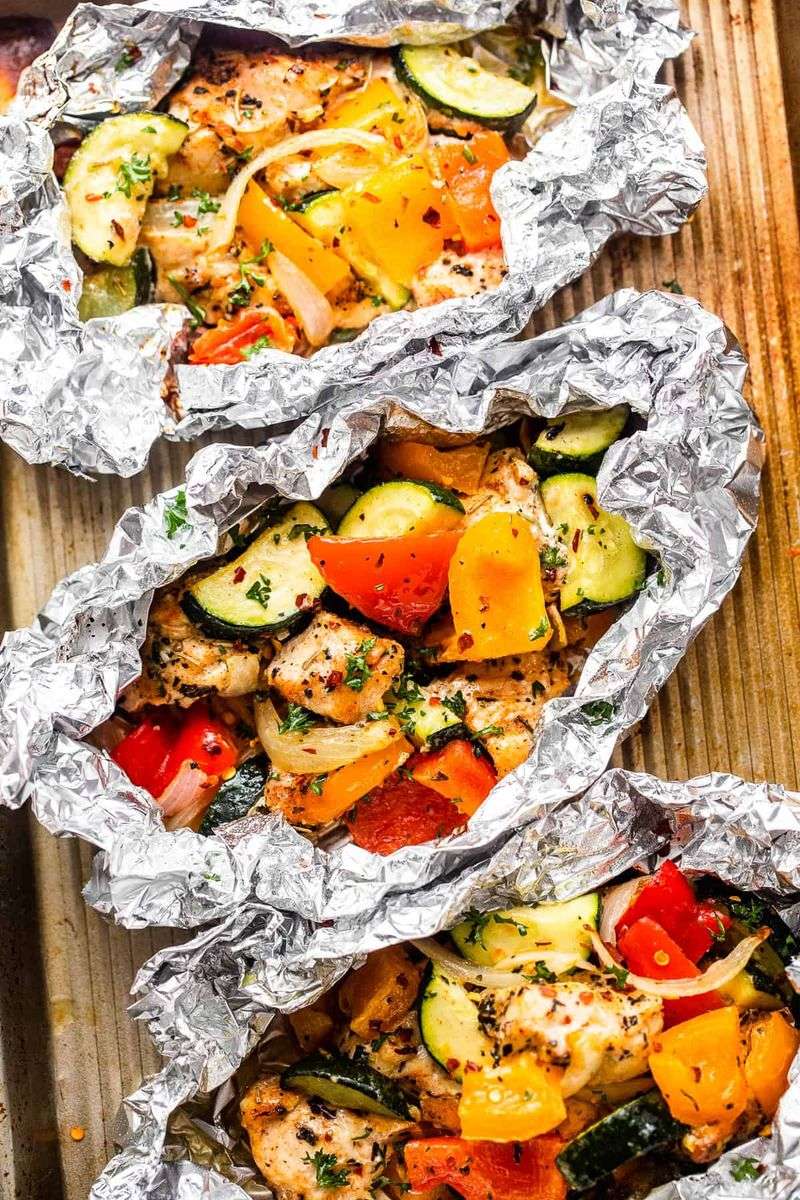
Foil-wrapped chicken and vegetable medleys create culinary magic with minimal effort. The foil traps steam and concentrates flavors, allowing everything to cook in harmony while exchanging delicious juices and aromas. Chicken thighs or breasts nestled with colorful bell peppers, onions, and zucchini become infused with complex flavors as they cook. The vegetables absorb the savory chicken juices while contributing their own sweetness to the meat. This technique works perfectly in ovens and on grills, creating individual portions that are easy to serve. For an extra flavor boost, add a splash of stock or white wine before sealing your packets. The result? Tender, juicy chicken and perfectly cooked vegetables with absolutely no dried-out edges.
10. Grilled Sausages with Potatoes and Corn
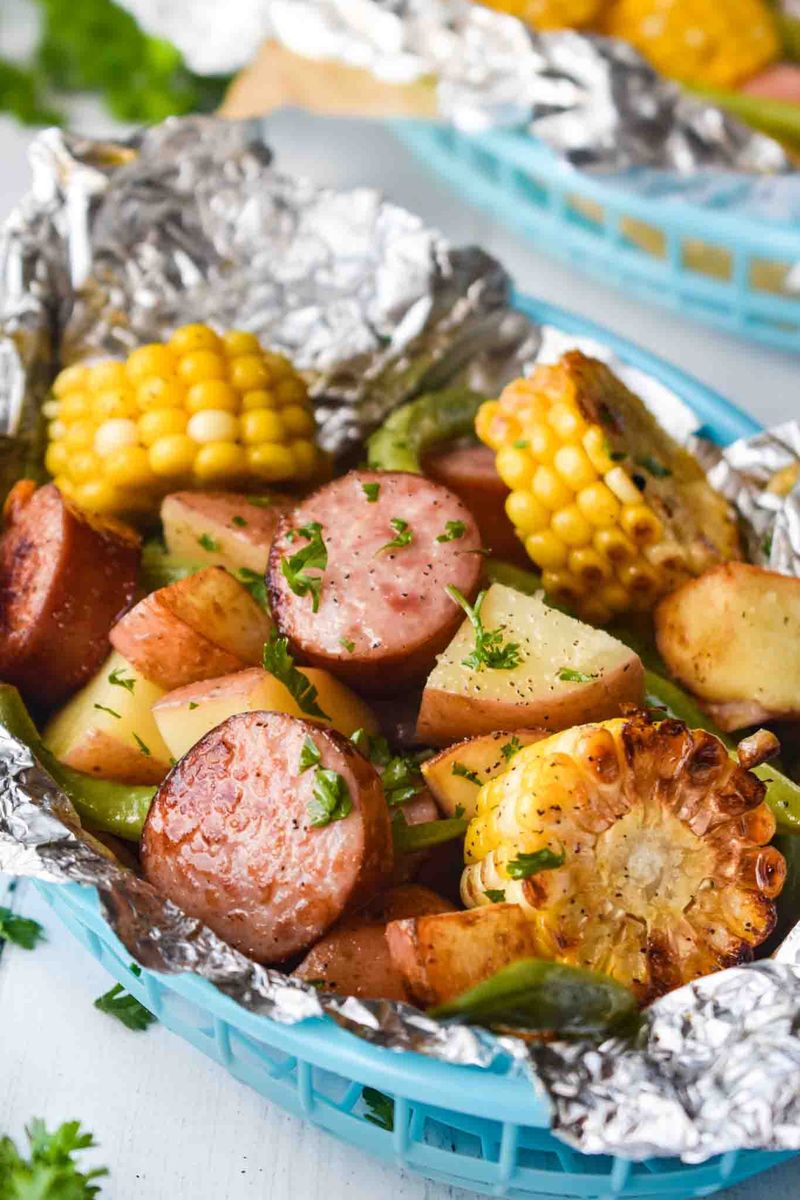
Grilling enthusiasts know the secret: foil-wrapped sausage packets deliver campfire flavor with gourmet results. The humble aluminum wrapper creates a flavor-sealed environment where sausages, potatoes, and corn exchange their best qualities. As the packet heats, sausage juices baste the vegetables with savory goodness. Meanwhile, the corn and potatoes release their natural sweetness, creating a balanced flavor profile that’s impossible to achieve with separate cooking methods. The beauty lies in customization – add bell peppers, onions, or your favorite herbs for endless variations. When the packet opens, that first rush of fragrant steam signals the perfect blend of smoky, juicy goodness waiting inside. For outdoor cooking, nothing beats this foolproof technique that delivers consistent results with minimal equipment.
11. Foil-Wrapped Potatoes
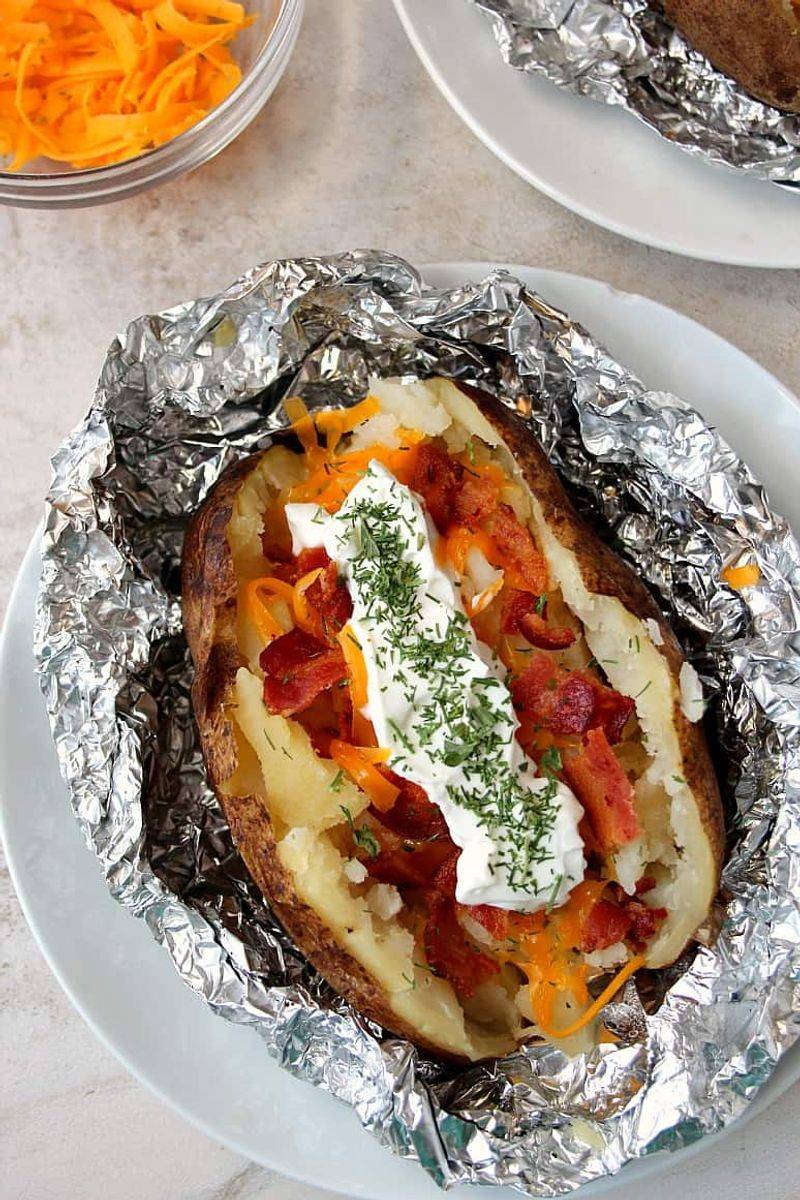
The humble potato reaches its peak perfection through the simple magic of foil wrapping. This classic technique creates the ideal balance between a fluffy, tender interior and a surprisingly crisp exterior – especially when finished directly on grill grates or hot coals. Wrapping creates a sealed environment where potatoes essentially steam in their own moisture.
The skin remains intact, concentrating flavors while the starchy interior transforms into a light, airy texture that perfectly absorbs butter, sour cream, or your favorite toppings. For campfire cooking, foil-wrapped potatoes become nearly foolproof, protected from direct flames while cooking evenly throughout. The method works equally well with sweet potatoes, creating caramelized natural sugars that make these tubers taste like dessert with zero added sweeteners.
12. Campfire Meals
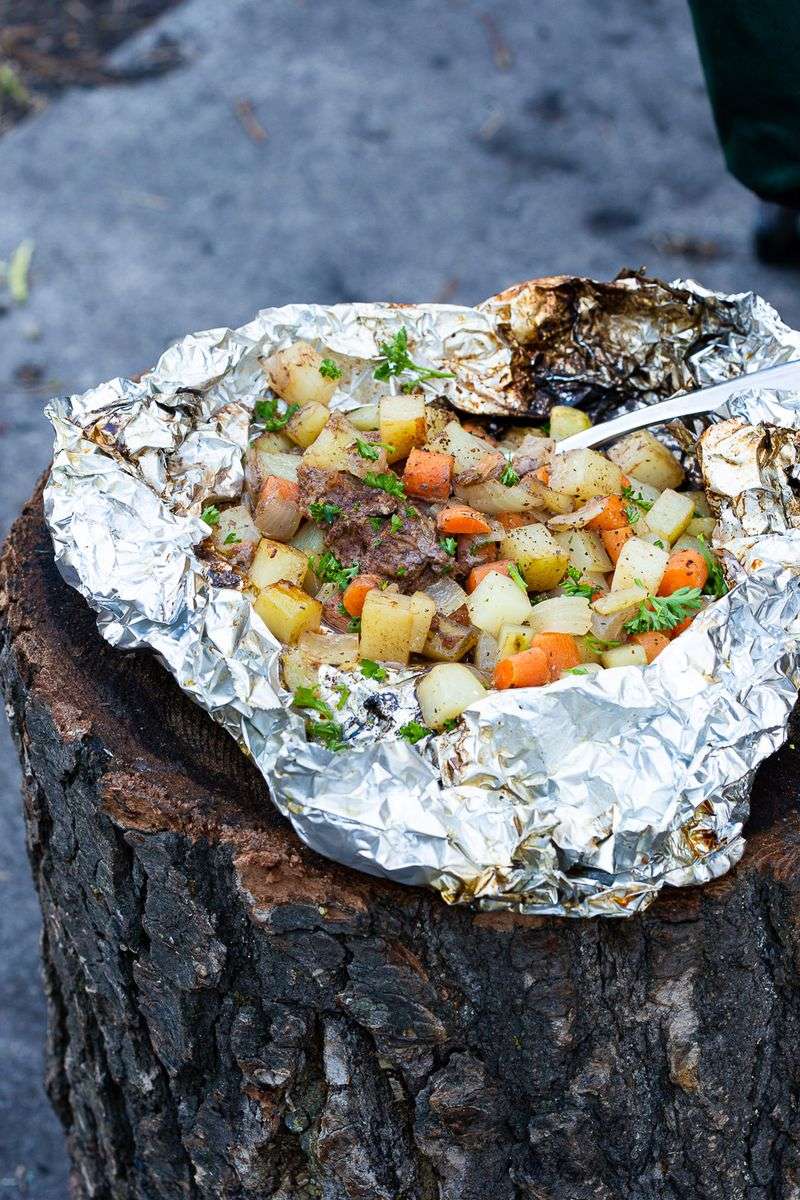
Foil packet cooking revolutionizes outdoor meals, transforming campfire cooking from basic to gourmet. These shiny pouches become portable cooking vessels that require zero special equipment while delivering maximum flavor with minimal cleanup. The technique works wonders for countless combinations: ground beef with potatoes, chicken with summer vegetables, or even complete breakfast packets with eggs and hash browns.
As the packets cook in the coals, ingredients meld together, creating deeply infused flavors impossible to achieve through other outdoor cooking methods. Preparation can happen at home, with packets ready to toss onto the campfire when hunger strikes. The best part? Each person can customize their meal with preferred ingredients and seasonings, making campfire dinners both personal and communal – a true outdoor feast without the fuss.
Leave a comment